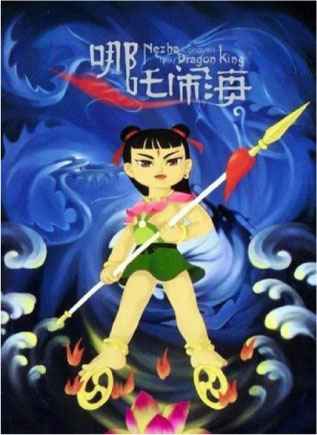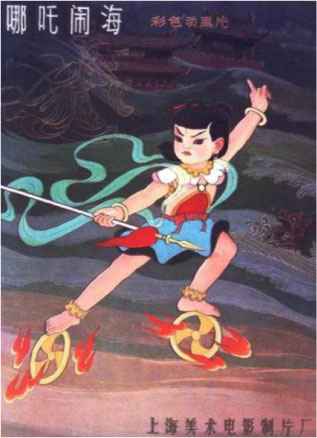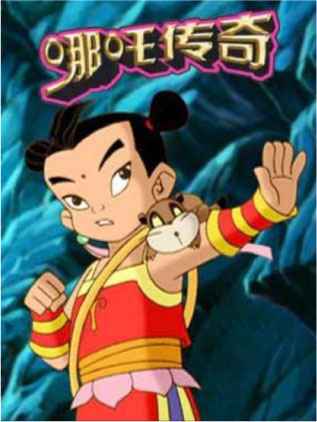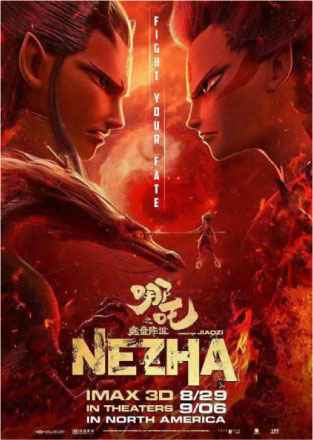Revised 5 August 2022
Accepted 10 March 2023
Available Online 24 March 2023
- DOI
- https://doi.org/10.55060/s.atssh.230322.010
- Keywords
- Visual grammar
Representational meaning
Interactive meaning
Compositional meaning
Posters
Nezha - Abstract
Based on M.A.K. Halliday's theories of metafunction in systemic-functional grammar, Gunther Kress and Theo van Leeuwen constructed the theory of visual grammar with three dimensions: representational meaning, interactive meaning and compositional meaning. In the wake of repeated practices, such a theoretical framework, which has been frequently applied in multimodal discourse analyses, has almost heralded an academic consensus, yet also precipitating researchers into a rigid pattern. However, this article gathers six posters from three different animations, that is, “Nezha Conquers the Dragon King” (1979), “The Legend of Nezha” (2003) and “Ne Zha” (2019), to anatomize the diachronic development of visual grammar in multimodal discourse. It concludes that posters in the new era lay more emphasis on narrative representation in representational meaning; make more use of indirect eye contact, long social distance, low angle and high modality in interactive meaning; and take on more personalized processing of information value, salience and framing in compositional meaning. Such a comprehensive analysis of visual grammar in multimodal discourse can not only foster a more profound understanding of the themes and connotations of Nezha's posters, but also signal an aesthetic evolution under changing times, thereby providing inspiration for contemporary poster designs and cultural transmissions.
- Copyright
- © 2023 The Authors. Published by Athena International Publishing B.V.
- Open Access
- This is an open access article distributed under the CC BY-NC 4.0 license (https://creativecommons.org/licenses/by-nc/4.0/).
1. INTRODUCTION
In the information era, with multimedia technology enjoying an increasingly irrevocable and irreversible momentum of development, language, the once optimum and optimal tool for information acquisition, begins to lose its overwhelming superiority and leave space for non-verbal signs. In such a manner, the mode of communication gradually extends its scope to such visual information as layouts, images, and colors as in movies and TV programs, thereby making it a necessity to foster the ability of multiliteracy, that is, multimodal analysis.
Admittedly, previous research has ushered in an incipient stage of multimodal discourse analysis where language use is no longer theorized as an isolated phenomenon but contextualized in conjunction with other semiotic resources which simultaneously contribute to the construction of meaning. According to Kay L. O'Halloran, multimodal analysis takes into account the integrated use of linguistic choices, typographical instantiation, visual images, and otherwise, averting “an impoverished view of functions and meaning of discourse” [1]. Gunther Kress points out that multimodality defines the field in which semiotic work takes place as “a domain for enquiry, a description of the space and of the resources that enter into meaning in some way or another” [2]. Not a few Chinese scholars also creatively probe into the theoretical framework of multimodal discourse analysis: Li Zhanzi considers multimodal discourse as a bold attempt at “understanding language as social semiotics” and expects its feasibility in English teaching [3]; Hu Zhuanglin ascribes the advent of multimodal semiotics to such semioticians as Saussure, Pierce, and Halliday, and proposes the idea of computer semiotics, drawing our attention to “the nurturing of multiliteracy” in the new epoch [4]; while Zhang Delu formulates a synthetic framework for multimodal discourse analysis on the basis of systemic functional linguistics, fixating on “the level of context of culture,” “the level of context of situation,” “the semantic level,” “the formal level,” and “the level of media” [5]. Notwithstanding the foregoing, visual grammar, put forward in Reading Images: The Grammar of Visual Design (2006) by Gunther Kress and Theo van Leeuwen, should never be underestimated in multimodal discourse analysis on account of its systematicness and effectiveness in deciphering visual images, especially posters of all sorts.
To interpret the multimodal discourse in posters, Nezha's images in three different movies or cartoons are selected as the subjects of study, with that in Ne Zha (2019) as the core. Ne Zha, an animated movie directed by Jiao Zi, designs Nezha, the Chinese mythological hero, as “Demon Pill” – an inborn demon child antagonistic to “Spirit Pearl” that incarnates valor and vigor, yet exerting all his energies to change his doom and destiny. By virtue of its intriguing scenarios, dazzling pictures, and stunning effects, this movie has gained an outright victory and plunged into the overseas arena. In contrast, Nezha's image remains more traditional and orthodox in Nezha Conquers the Dragon King (1979) and The Legend of Nezha (2003) where the hero sustains his heavy responsibility of praising virtue and punishing vice. Remarkably, in addition to the subversion of character images, posters in these productions differ widely as well, necessitating a multimodal discourse analysis to decode those discrepancies.
Therefore, based on the three perspectives of visual grammar, i.e. representational meaning, interactive meaning and compositional meaning, this article attempts to conduct a multimodal analysis of Nezha's poster images in Ne Zha, Nezha Conquers the Dragon King, and The Legend of Nezha, to unscramble the multi-layered meanings and propagandistic functions of posters in different decades, thus validating the expressiveness, interactiveness, and complementation of symbols in multimodal discourse resources.
2. DATA AND METHODOLOGY
The linguistic data under investigation consist of six posters, with Fig. 1, Fig. 3 and Fig. 5 as chief materials and Fig. 2, Fig. 4 and Fig. 6 as supplementary ones. Fig. 1 is the poster of Nezha Conquers the Dragon King (NCDK), Fig. 3 is that of The Legend of Nezha (TLN) and Fig. 5 is that of Ne Zha. The figures are arranged chronologically as follows:

NCDK (1979).

NCDK (1979).

TLN (2003).

TLN (2003).

Ne Zha (2019).

Ne Zha (2019).
Fig. 5, the research priority of this article, is placed in contrast with Fig. 1 and Fig. 3 to spot their differences and to highlight the major changes of posters' multimodal discourses in such an information age.
When it comes to theoretical basis, M.A.K. Halliday's views of language, especially his thoughts of metafunction, occupy a pivotal position. He maintains that language is a sort of sign in the social system, essentially carrying “meaning potential,” and that it cannot be interpreted as “a set of rules but as a resource” [6]. Hence, language represents nothing but one of the symbols in meaning system where other tokens like pictures, sounds, and colors coexist. More importantly, Halliday and Matthiessen accentuate the triple metafunctions of language, that is, “ideational metafunction,” “interpersonal metafunction,” and “textual metafunction” [7], laying a firm foundation for the formulation of visual grammar.
Just as Halliday puts forward three metafunctions of language in his systemic functional grammar, so Kress and van Leeuwen correspondingly come up with three meanings in their visual grammar: representational meaning, interactive meaning, and compositional meaning. The trio can provide a solid theoretical framework for tackling three questions in image analysis: 1) In what way are the elements in the images represented? 2) What kinds of relationship are implied to exist between the viewer and the represented participants? 3) How can these relationships be built through the images' layouts, or as Zhu Yongsheng indicates, the “information distribution” [8]?
3. CASE STUDY
Nezha's poster images abound with conspicuous multimodal characteristics, so much so that they match well with Kress and van Leeuwen's visual grammar, ranging from representational meaning, to interactive meaning, then to compositional meaning. The following sections make a detailed analysis of these meanings embedded in the semiotic resources of those selected posters, thereby elaborating the generation, interaction, and transmission of image meanings in multimodal discourse.
3.1. Representational Meaning
Representational meaning visually captures the essence of events, participants, and environment in the images. The implementation modes of representational meaning encompass narrative representation and conceptual representation. As Kress and van Leeuwen differentiate, the former serves to illustrate “unfolding actions and events, processes of change, transitory spatial arrangements” while the latter represents participants “in terms of their class, structure or meaning, in other words, in terms of their generalized and more or less stable and timeless essence” [9]. Notably, narrative representation bears a hallmark that the conceptual one is not endowed with: the vectors – a set of oblique or diagonal lines formed by depicted images to connect one or more participants. In the posters studied in this article, both narrative representation and conceptual representation, literally or figuratively, function as the relaters of Nezha's stories.
3.1.1. Narrative Representation
Arguably, narrative representation seizes the principal position in the posters of Ne Zha, conducive to the telling of a new story that subverts Nezha's traditional image entrenched in audiences' minds. To be more specific, in Fig. 5, there are four images in total, with two Ao Bing (the third prince of the Dragon King) on the left side and two Nezha on the right. On the upper part, Ao Bing and Nezha hostilely look at each other with fierce eyes and sulky countenances, forming a symmetry or balance that displays their diametrical confrontation in the story. On the lower part, however, Ao Bing reveals his true shape, a dragon, in sheer horror, while Nezha is about to stab the fire-tipped spear triumphantly at the dragon's frightened eyes. Undoubtedly, there are “eye-lines, or gestures indicating a line of force in a particular direction” [10]. In other words, the two characters' eye contacts and body postures chart many geometrical lines, or rather, vectors in this poster, thereby bearing testimony to narrative representation. In doing so, the main plot of Ne Zha has been graphically narrated beforehand.
In contrast, narrative representation is less employed in the posters of The Legend of Nezha, and least in those of Nezha Conquers the Dragon King. In Fig. 1, there is only one well-marked image – a Nezha standing still – and not the faintest tendency towards actions. Similarly, it is hard to discern what may happen in Fig. 3 or Fig. 4 in spite of the vectors between Nezha and the red armillary sash or the piggy bear. Anyway, these figures more or less eschew the adoption of narrative representation.
3.1.2. Conceptual Representation
Conceptual representation, though relatively unapparent in the posters of Ne Zha, still incorporates some certain symbolic meanings worth clarifying. For example, right in the center of Fig. 5 lies a circular design analogous to the diagram of tai chi in which two marks, exactly the same as those on Ao Bing's and Nezha's foreheads, take well-matched shares in scope and in strength just as yin and yang do. Such a diagram looks “out of place in the whole” in some way but represents “meaning or identity” [9], thus falling into the definition of symbolic attribute that serves to manifest the meaning of carriers. In such a manner, the seemingly digressive diagram manages to symbolize the binary opposition between Ao Bing and Nezha – or rather, the carriers – and suggest the plot development ingeniously and artfully.
Nevertheless, as regards the other two animations, conceptual representation plays an indispensable role in their poster designs. In Fig. 1 and Fig. 3, it is fair to say that Nezha's images are shown “standing without reason instead of being involved in some action” [11], thereby drawing more attention to those components that constitute the whole rather than the narrative activities associated with the whole. Or rather, as Kress and van Leeuwen expound, they represent meanings “as coming from within, as deriving from qualities of the Carriers themselves” [9]. For instance, in Fig. 1, meanings cannot originate from actions but from Nezha's expressions or attires which, in reality, have something do with traditions at that time. Specifically, Nezha's makeup in Fig. 2 naturally bespeaks a reminder of facial masks in Peking operas, thus bearing some cultural implications. As for The Legend of Nezha, both the naivete of Nezha in Fig. 3 and the naughtiness of the piggy bear in Fig. 4 indicate the cartoon's catering to child audiences. Therefore, these two animations lay more emphasis on conceptual representation to represent a wealth of meanings in succinctness and profoundness.
3.2. Interactive Meaning
3.2.1. Contact
Contact identifies interactive relations in pictures from which represented participates look directly at the viewer's eyes, or in which this is not the case. To be more exact, images make “demands” in the former case because they “connect the viewer and participant on a formal (and imaginary) level” and “offers” in the latter when “represented participants look away from the viewer” [10]. In Fig. 1, Nezha's image makes demands through direct eye contact with the viewer. Such a poster, according to Kress & van Leeuwen, seeks to bring about “a relation of admiration for, and identification with, a national hero” [9], urgently demanding communication with its audiences. Fig. 3, Nezha's image, to some degree, becomes a blend of demands and offers in that the hero does not only contact the viewer out of the corner of his eyes but meanwhile offers a picture in which he gazes at the red armillary sash. By contrast, Fig. 5 displays a striking departure from the previous cases. In the poster, it is the two protagonists themselves who make eye contact with each other, entirely looking away from the viewer. In this way, more information on the movie's characters or plot is offered.
3.2.2. Social Distance
Social distance suggests different relations between represented participants and viewers by means of “the choice between close-up, medium shot and long shot” [9]. The closer the shot is, the closer the social distance becomes. In the posters of Nezha Conquers the Dragon King and The Legend of Nezha, either close-up or medium shot is employed to establish a close relationship between hero and viewer, thereby developing a social relation of acquaintanceship since Nezha's image has enjoyed a widespread popularity in folk. Nevertheless, Ne Zha, it should be noted, makes a bold experiment in the choice of different shots. In Fig. 5, Ao Bing and Nezha on the upper part are focalized by close-up, while the dragon and Nezha on the lower part turn out to be pushed away by long shot. In such a manner, regardless of some kind of familiarity between the hero and his admirers as generated by close-up, Nezha's image still admonishes viewers to keep a distance in order to carve out a niche for adaptions, subversion, and otherwise.
3.2.3. Attitude
Attitude can be realized through the selection of an angle or a point of view, implying the expression of subjectivity towards represented participants. Generally speaking, in the horizontal level, a frontal angle indicates a sort of involvement and an oblique angle a sort of detachment; while in the vertical level, a high angle hints at viewer power, an eye-level angle at equality, and a low angle at represented participant power. By extension, if the viewer takes into account the central axes of the posters under discussion, it is obvious that Nezha is positioned exactly at the axis in Fig. 1, slightly off the axis in Fig. 3, yet thoroughly far away from the axis in Fig. 5, so the viewer in the case of Ne Zha is “detached from the participant and his world” [11]. What's more, when it comes to the altitudes of images in the vertical direction, it can be concluded that Nezha is placed higher and higher from Fig. 1, to Fig. 3, then to Fig. 5. Therefore, Nezha's image in Fig. 5 is observed by the viewer from a low angle which, as stated by Kress & van Leeuwen, makes the image “look imposing and awesome” [9].
3.2.4. Modality
Modality, in principle, is closely linked with color dimension. Bell and Milic set the criteria for its three values as follows:
High sensory modality: image uses highly saturated colors naturalistically;
Medium sensory modality: image uses less saturated colors, e.g. ‘washed out’ or ‘ethereal’ use of pastels;
Low sensory modality: image is monochrome (black-and-white) only [10].
With the advancement of color art, cinematography shows a development tendency towards high sensory modality, to which the evolution of color saturation from Fig. 1, to Fig. 3, then to Fig. 5 can testify. It is no exaggeration to say that the whole Fig. 5 is saturated with fiery red, so much so that its audiences would be inevitably overwhelmed by wild visual fantasies, which, compared to the less saturated colors in Fig. 1, heralds a new era of movie art to a certain extent.
3.3. Compositional Meaning
Compositional meaning refers to the composition of the whole, that is, “the way in which the representational and interactive elements are made to relate to each other, the way they are integrated into a meaningful whole” [9]. What conduces to the construction of such a meaningful whole covers three tools: information value, salience, and framing. The first tool endows the placement of elements with specific information values “attached to the various ‘zones’ of the image”. The second one employs elements to attract the viewer's attention to differing degrees by use of such factors as “placement in the foreground or background, relative size, contrasts in tonal value (or color), differences in sharpness, etc.”. The third one disconnects or connects elements of the image by means of the presence or absence of “dividing lines” or “actual frame lines” [9]. These three interrelated systems effectively apply to composite visuals – posters, for instance – in an integrated way.
3.3.1. Information Value
In general, the position of each element of a poster image can effectively convey some specific information. To name a few, the left-right layout refers to given and new information, the center-periphery layout to primary and secondary information, and the top-down layout to ideal and real information. As in the first four posters, Nezha's images occupy the central and lower parts without any exception, thereby amplifying the superiority and authenticity of such a hero. However, as regards the posters of Ne Zha, either the center-periphery layout or the top-down one seemingly loses its efficacy. Instead of placing Nezha at the center or bottom, Fig. 6, the English edition of Fig. 5, focuses on the diagram of tai chi, the slogan “FIGHT YOUR FATE,” and such texts as “NE ZHA,” “IMAX 3D 8/29,” or “IN THEATERS 9/06.” In this way, the posters of Ne Zha, different from those of traditional movies, succeed in drawing more attention to character relations, themes, release dates, or viewing experiences.
3.3.2. Salience
When images, or terminologically speaking, compositions, are in the integration mode, salience can be judged on the basis of visual clues in order to interpret some certain compositional meanings. It results from complicate interactions, or as Kress and van Leeuwen point out, “a complex trading-off relationship between a number of factors: size, sharpness of focus, tonal contrast” [9]. In Fig. 1, apparently, Nezha occupies the largest size and the most central position in the foreground, dwarfing those dim images of dragons in the background. It is the same with Fig. 3 which highlights Nezha's heroic image in smartness and shrewdness. Nevertheless, in Fig. 5, both Ao Bing and Nezha take the same share in size and their little images come to the fore. In this way, not only does the poster accentuate the binary relation between Ao Bing and Nezha, but it can catch the audiences' eyes by virtue of the well-proportioned elements in different sizes.
3.3.3. Framing
Framing can be realized by visual frame lines, through which the elements of a composition may be strongly or weakly framed, “either disconnected, marked off from each other, or connected, joined together” [9]. The stronger the framing of an element, the more it is represented as a separate unit of information in the posters. In traditional posters, the framing often proves so strong that the viewer can see through their ideographic expressions at the first glance. For instance, in Fig. 1, the color of Nezha's image looks obviously brighter than that of the background, which is brimming with dark blue, thereby bringing about a sense of disconnectedness before the viewer's eyes. Nonetheless, from Fig. 3 to Fig. 5, it is noticeable that a trend of connection or fusion of colors comes to the force. Especially in Fig. 5, all of the elements in the poster, including Nezha, Ao Bing, and even the dragon, are saturated with flaming red – the representative color of the “Demon Pill” Nezha. In such a manner, the poster is framed in the minimum degree, so its viewers are expected to spend more time observing, discerning, and interpreting. Also, this kind of framing caters to the advancement of movie-making technology and the transmutation of the audience's aesthetics, thus bearing “a striking time stamp” and “a new attribution of cultural transmission” [12].
4. CONCLUSION
As science and technology continue to thrive and flourish, symbolic resources appear increasingly ineluctable and indispensable in human communication activities, such as images, gestures, colors, and so forth, thereby drawing forth the overwhelming progress of multimodal discourse analysis. As an inevitable trend of academic research, this approach, according to Zhu, is embedded with tremendous potential and social value, laying a solid foundation for “more comprehensive and accurate interpretations of discourses” and “more synthetic functions of multiple modes in social interaction” [8]. Posters fall into the category of multimodal discourse and undergo changes with time elapsing, which serves as the research subject of this article.
This article succeeds in expounding representational meaning, interactive meaning, and compositional meaning of the posters of three animations about Nezha in order to penetrate the discrepancies and changes of multimodal discourses in different epochs. It can be found that in the representational meaning, different from the traditional movies that emphasize conceptual representation, Ne Zha, with an aim to narrate a totally new story, attaches more importance to narrative representation when portraying its posters. In the interactive meaning, far from shortening the distance between images and viewers as the traditional posters have done, Ne Zha's posters utilize such technics as no eye contact, long shot, oblique angle, or high modality to alienate viewers from the images and astound them into unique plots and visual fantasies. In the compositional meaning, instead of following the rules or regulations of traditional fashions, Ne Zha creatively composes its posters through rearranging information, reordering salient features, and reversing framing styles, thereby keeping its viewers fascinated by compelling stories and mesmerized by upgrading techniques.
Arguably, Ne Zha's posters have proposed a new idea for diffusing Chinese stories and cultures in the context of multimodality. As Li Yan and Ran Li indicate, Ne Zha retrospects to Chinese cultural traditions, yet ending with “ethical and affectional reconciliations of conflicts instead of horrifying tragedies as in the past” [13]. Taking into account such a subversion, the posters, accordingly, adjust the employment of visual grammars. Therefore, under the historical background that necessitating the responsibility of spreading Chinese culture, movies, the most famous and serviceable media, can definitely bring their superiority into full play if yoked with the powerful weapon of visual grammar.
REFERENCES
Cite This Article

TY - CONF AU - Pengfei Zhang PY - 2023 DA - 2023/03/24 TI - Visual Grammar in Multimodal Discourse: A Case Study of Nezha's Poster Images BT - Proceedings of the 9th International Conference on Education, Language, Art and Inter-Cultural Communication (ICELAIC 2022) PB - Athena Publishing SP - 59 EP - 65 SN - 2949-8937 UR - https://doi.org/10.55060/s.atssh.230322.010 DO - https://doi.org/10.55060/s.atssh.230322.010 ID - Zhang2023 ER -









